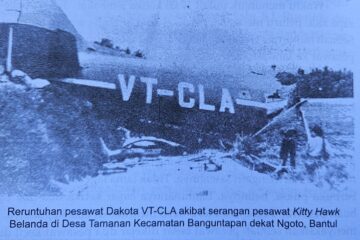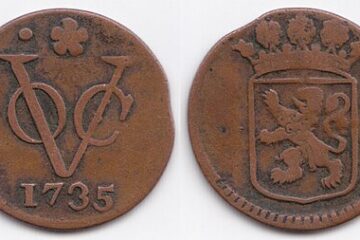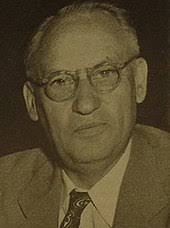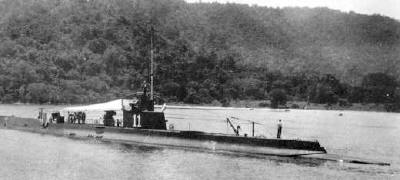
HNLMS K XI was a Dutch submarine commissioned into the Royal Netherlands Navy in 1925. Built at the Fijenoord shipyard in Rotterdam, she was designed for patrol duties in the Dutch East Indies. Before departing for her station, K XI participated in a Baltic Sea exhibition tour, visiting ports in Lithuania, Latvia, Estonia, and Finland. On October 15, 1925, under the command of First Lieutenant G.E.V.L. Beckman, she departed for the Dutch East Indies, arriving in Sabang on December 28, 1925.
During World War II, K XI operated primarily out of Surabaya. Following the German invasion of the Netherlands in 1940, she conducted patrols east of Malaya under British command from December 8, 1941, to January 23, 1942. After a maintenance period, K XI fled to Colombo, Ceylon (now Sri Lanka), as Japanese forces advanced in the Dutch East Indies. En route, she rescued survivors from the Australian sloop HMAS Yarra, the British depot ship Anking, and the Dutch ship Parigi, all victims of Japanese attacks. In Colombo, K XI served as a target ship for anti-submarine warfare exercises with the Royal Navy and Royal Indian Navy. Later, at the request of the Royal Navy, she was transferred to Fremantle, Australia, arriving on March 22, 1945. She was decommissioned in early April 1945.
After decommissioning, K XI was towed to HMAS Leeuwin III (Royal Freshwater Bay Yacht Club) in Perth, where she was partially stripped, and her deck gun was donated to the yacht club. Subsequently, she was handed over to the Royal Australian Navy for disposal. While moored at North Quay, K XI sank due to an open valve but was salvaged six weeks later. In September 1946, she was towed to a designated “ships’ graveyard” west of Rottnest Island and scuttled.
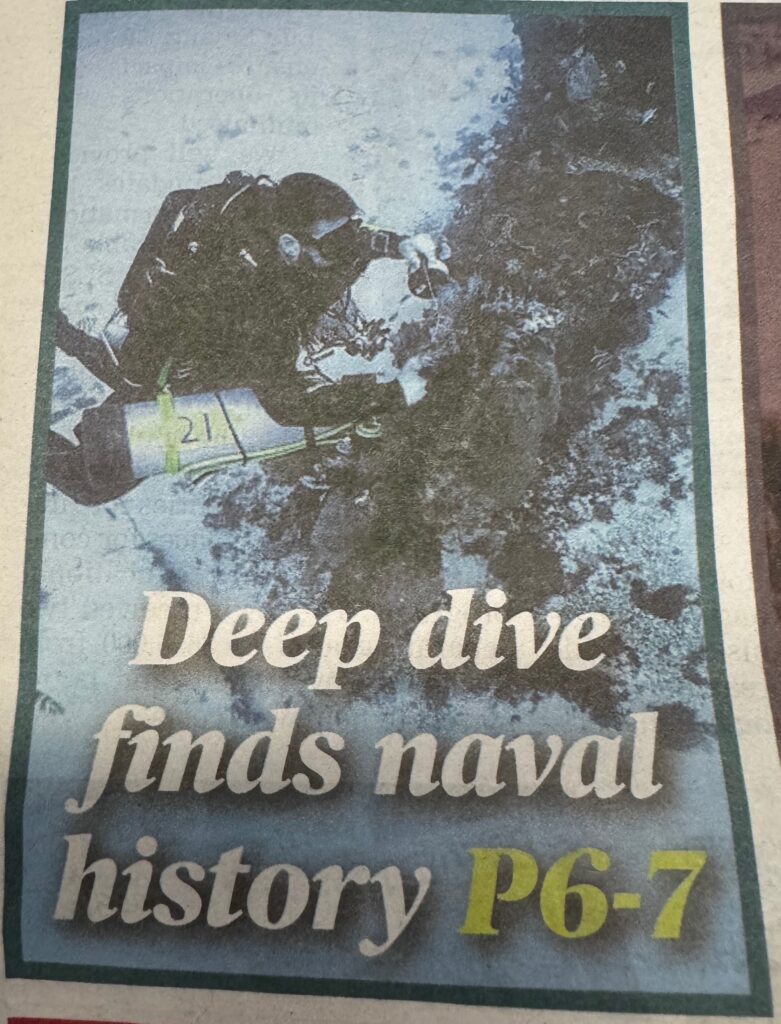
For decades, the exact location of K XI’s wreck remained unknown. On January 1, 2025, divers Andrew Oakeley, David Jackson, and Patrick Morrison discovered the wreck south of Rottnest Island, approximately 15 kilometers from the originally documented scuttling site. The Western Australian Museum confirmed the submarine’s identity by comparing archival data with a 3D model created by the divers. The wreck lies at a depth of 40 meters and is accessible to advanced scuba divers with appropriate certifications.
This discovery not only highlights the historical ties between the Netherlands and Australia but also underscores the collaborative efforts in managing shared maritime heritage. Martijn Manders of the Dutch Cultural Heritage Agency remarked on the significance of the find, emphasizing the close cooperation between the two nations in preserving marine cultural heritage.
News articles about the discovery: the Perth Now newspaper, Thursday 20 February 2025 (top) and NOS news online (bottom), 20 February 2025:
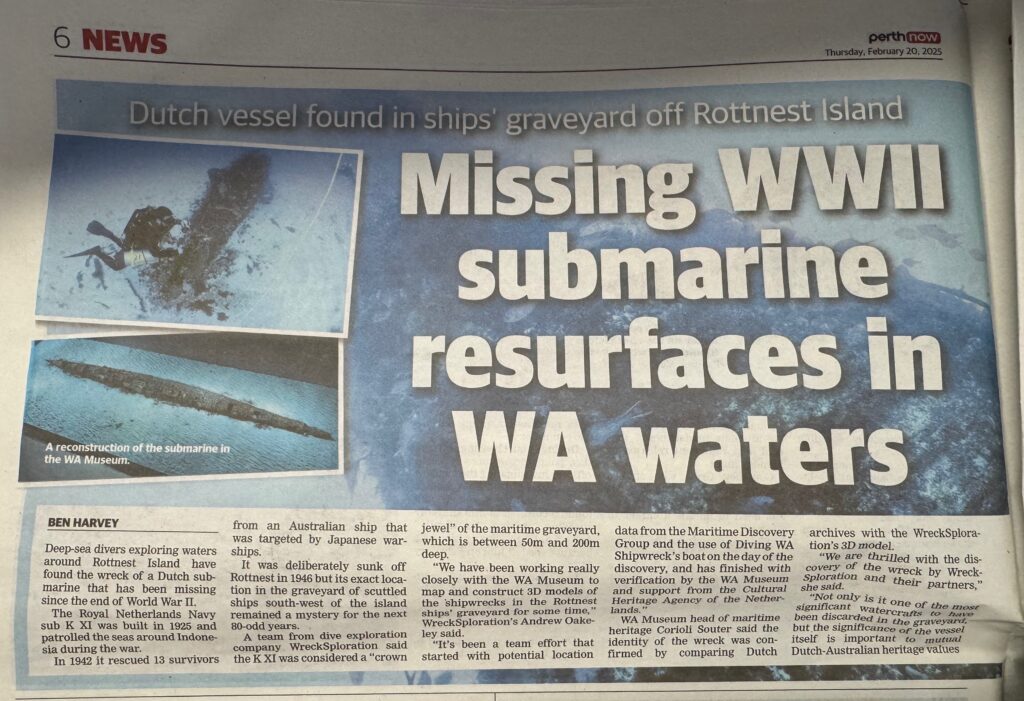
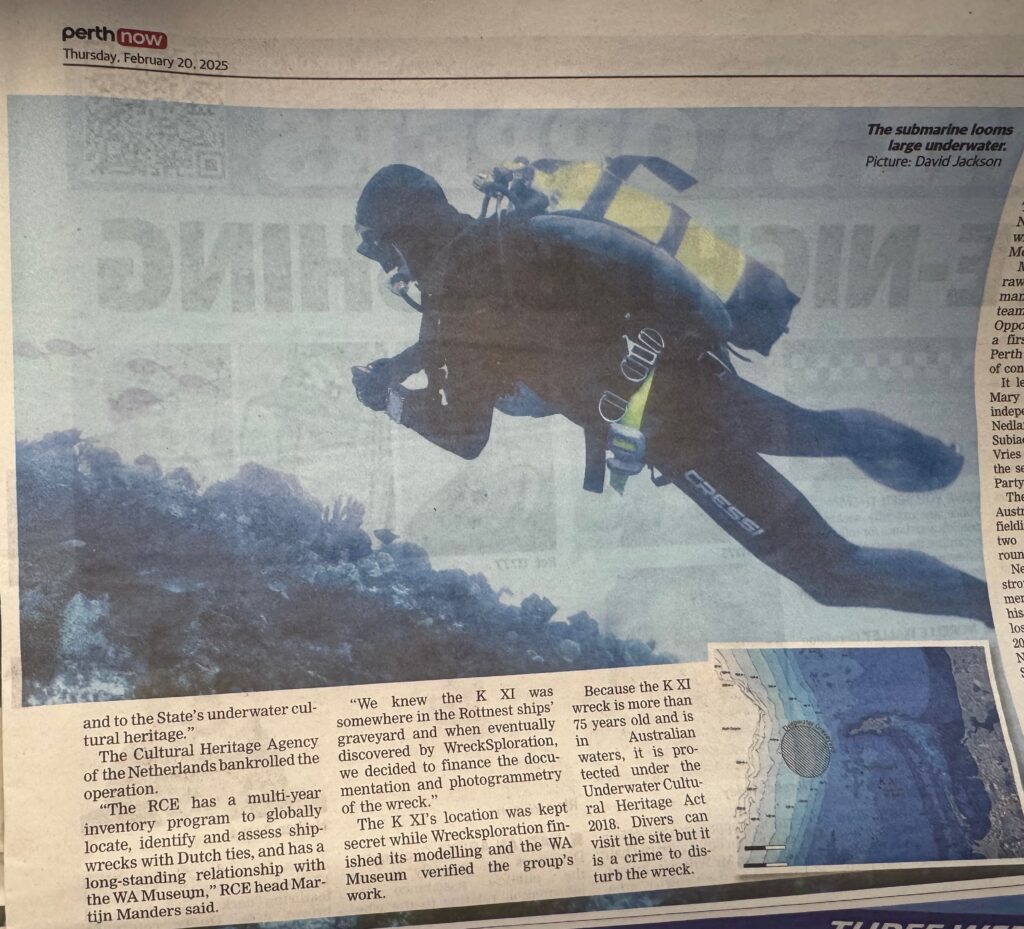
Dive teams and the WA Museum used old records and amazing new 3D mapping (photogrammetry) to solve this decades-long mystery.
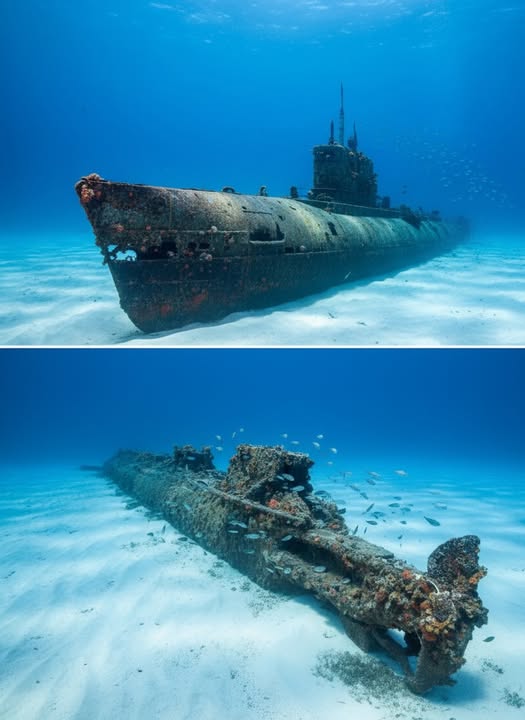
See also:
- Dutch Submarines operating from Australia during WWII
- K XI on Wrecksploration
- Online news article from Perth Now
and this chapter from Nonja Peters’ book A Touch of Dutch:
